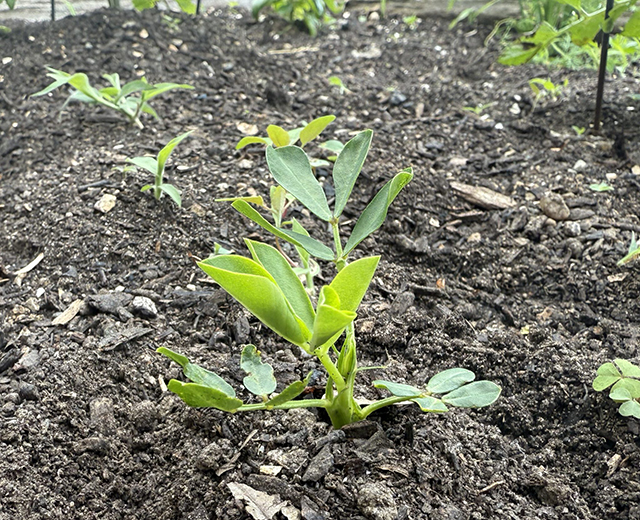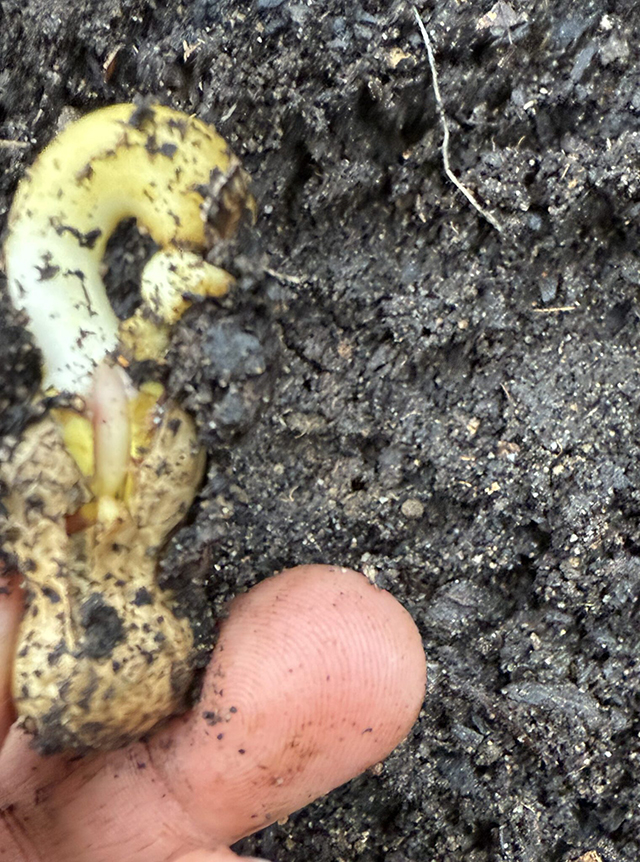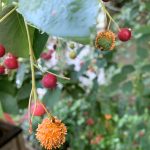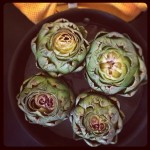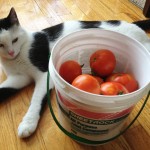I’m Growing Peanuts!
In May, I discovered the most wonderful surprise in my garden —a peanut sitting right on top of the soil! It was split open, and a tiny sprout was starting to grow. I tucked it into the soil with my fingers and thought, imagine? It must have come from the pile of peanuts someone leaves for the pigeons and squirrels outside the Beach 91st Street Community Garden gate, almost every morning.
At our last monthly garden meeting, I went looking for the peanut plant but wasn’t exactly sure what I was looking for. Luckily, garden member Lucy was there. I told her about my little peanut experiment, and she immediately identified the plant in my plot—it had grown! It’s currently about three inches tall. I was overjoyed and started bombarding her with all the questions.
Georgia is the leading peanut-producing state in the U.S., accounting for over half of the total production, and get this, by U.S. Law, peanut butter must contain at least 90% peanuts to be labeled as such. The remaining 10% can consist of optional ingredients like salt, sweeteners, and hydrogenated vegetable oils.
Peanuts are not nuts!! They are classified as legumes. A legume is in the pea family – a pod-like fruit containing seeds.
My first thought was: Wait… did I just plant a tree in my 3-foot by 5-foot garden plot?! Lucy reassured me that peanuts aren’t trees. That’s when it hit me—I had absolutely no idea how peanuts grow. So embarrassing! But Lucy knows a thing or two about peanuts and explained that they actually grow underground. And… they’re not nuts at all. They’re legumes! Mind blown.
My second thought is, how many peanuts will one plant actually produce? Lucy smiled and said, “Several handfuls!” She explained that peanuts need plenty of sunlight and well-drained, sandy soil to thrive (Hello, Rockaway!) She recommended trimming a branch off my nearby tomato plant to give the peanut more light. She thinks it may be a bit shaded right now, and since I have plenty of tomato plants, I decided I’m okay with this sacrifice.
Watering should be regular, keeping the soil moist but not soggy. As the plant matures, little yellow flowers will bloom. After pollination, these flowers send “pegs” down into the soil, and that’s where the peanuts actually form. I was fascinated! Lucy said the plant needs time and space for those pegs to do their thing underground.
For harvesting, she told me to wait until the leaves start yellowing in the fall. According to the National Peanut Council of America,that’s about 150 days after planting. That’s when you gently dig around the plant and pull it up, shaking off the soil to reveal peanut pods clinging to the roots! Then, you need to dry them for a few days before roasting or storing.
After 25 years of gardening, there’s still so much I don’t know—and it’s a joy to keep discovering more, especially with the help of friends in the community garden. I’ll definitely follow up on my peanut plant come harvest time.
Source: peanutsusa.com
